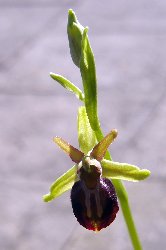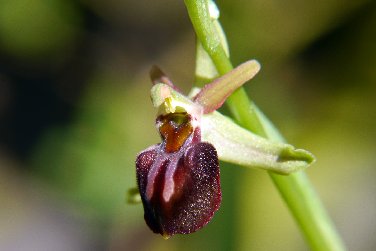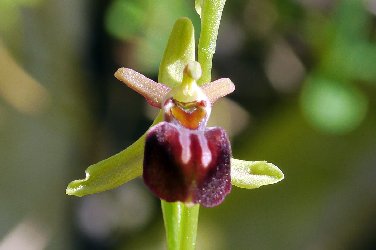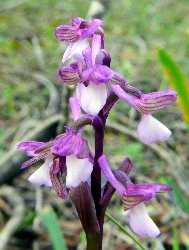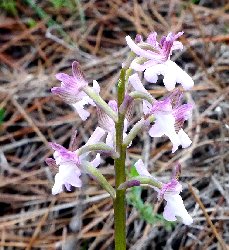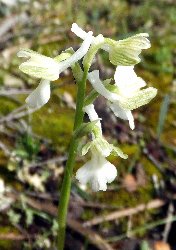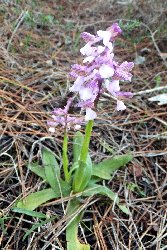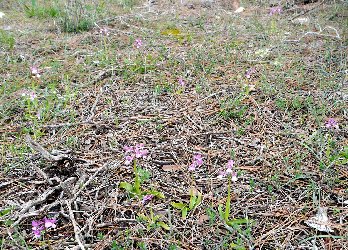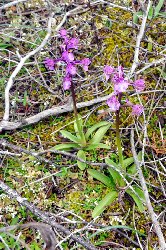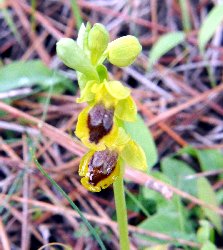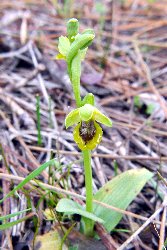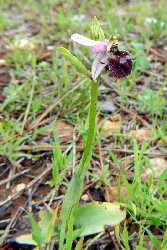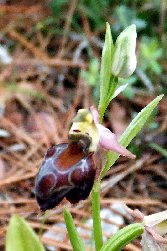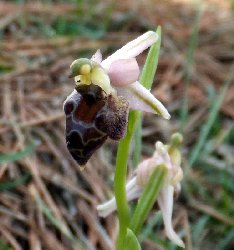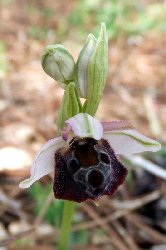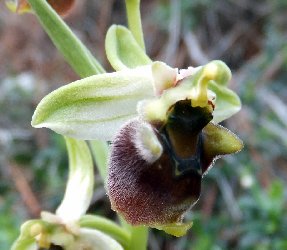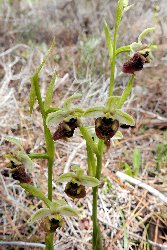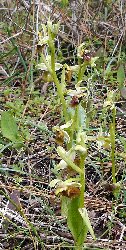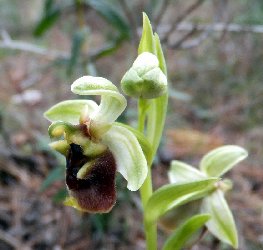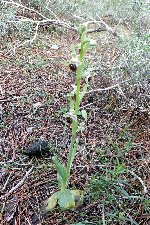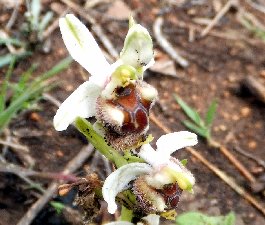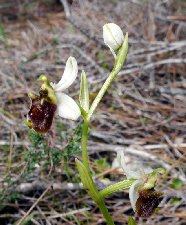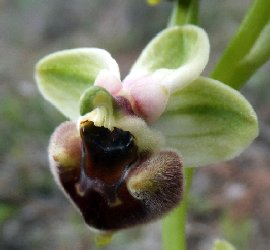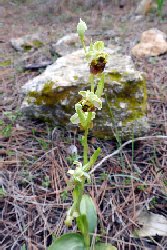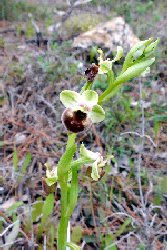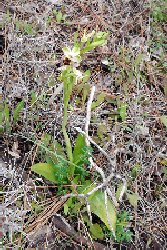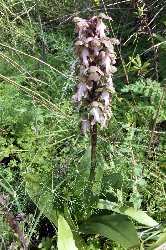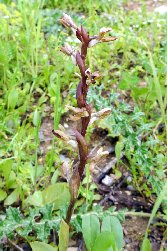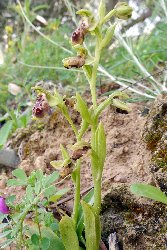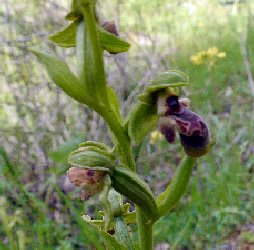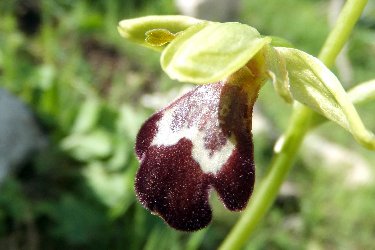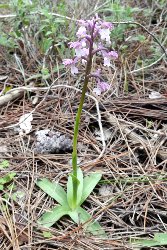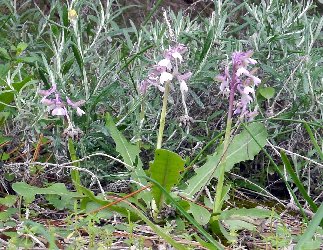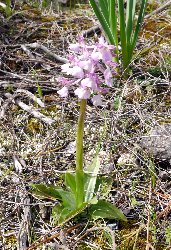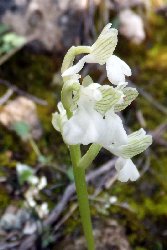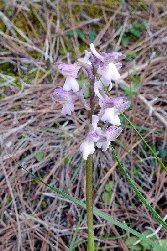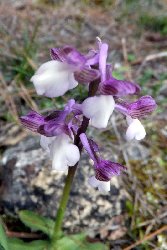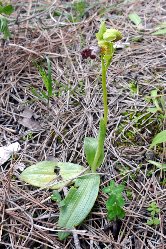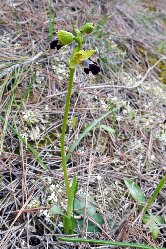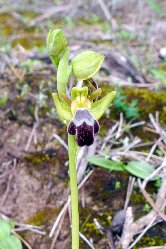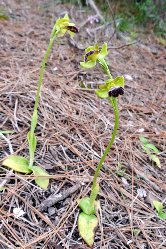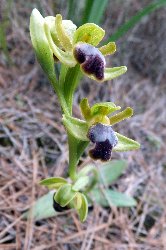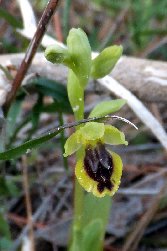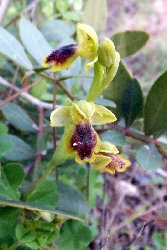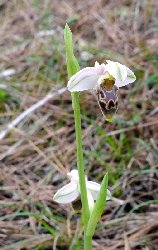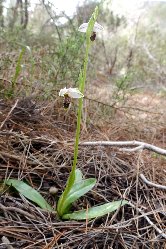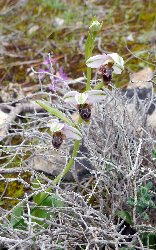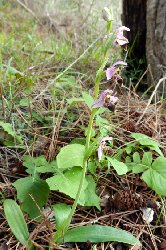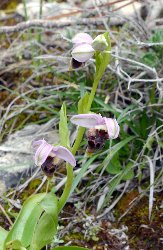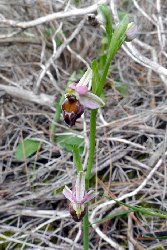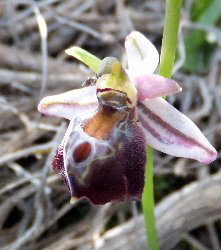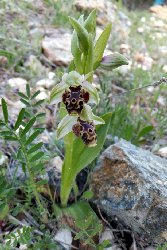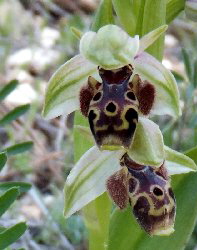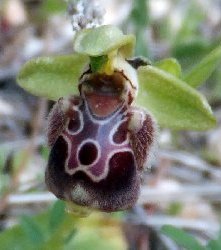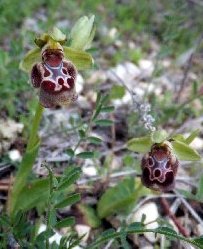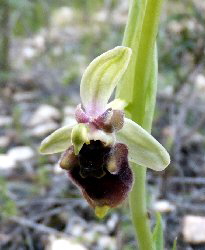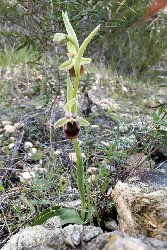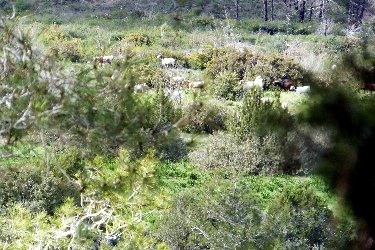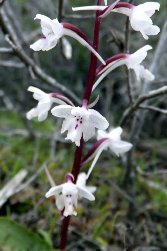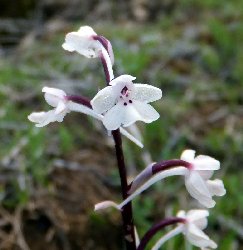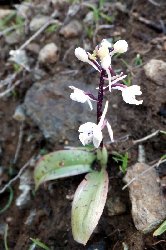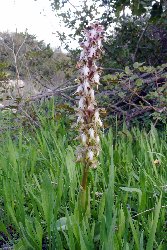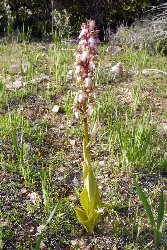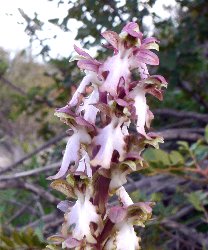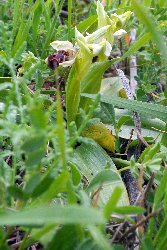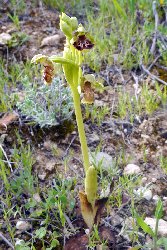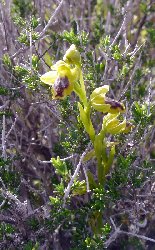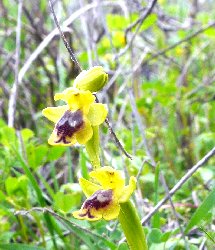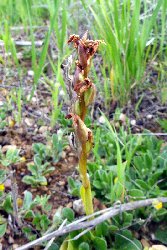|
|
|||||||||||||||||
|
|
|||||||||||||||||
 |
|
Last year I purchased a single, cultivated Early Spider Orchid, and this spent the winter sheltered in the garden shed. I had noticed the flower spike with buds appearing, and it miraculously burst forth into flower the day before we set off to Cyprus. Only two flowers this year, but that's enough for me. Nice to have not missed it while away. And as a bonus, the second flower was out on our return. The next three pages all concern a trip to Cyprus, a bit of an orchid haven. In just a few days we manged to see 25 or more species and other entities, only one of which wasn't new to me. See the separate page for my impressions of the island. Pegeira Forest, 13th March 2017 This lies to the north of Paphos, halfway to the Akama peninsula, at an altitude of 356 metres (1170 feet). The whole area is open pine forest with low shrubs. There is a well marked picnic site just off the road and you know you have arrived because at the entrance is a small and obvious group of Orchis syriaca. Examples of these can be found across the entire area, often just growing at the clearing margins, in a range of shades from near white to a deepish purple, all with a paler or white lip. The lips also showed a variation in shape from entire to distinctly three-lobed or wavy edged. All the other species of this visit were of the Ophrys genus. Ophrys sicula ssp. galalaea is the Cypriot version of the more familiar O. lutea. These grew dotted about. The lip is marked by two deep clefts near the tip. The next more easily identifiable species is Ophrys elegans (O. argicola ssp elegans), which for me does not quite live up to its name. The tell-tale indications are the bent back sepals, especially the dorsal sepal, and the long pink petals. However, the fourth example below does not seem to match the other three. The dorsal sepal curves over the column and the lip shape is widest towards the base, not in the middle. Otherwise the colours of the lip pattern does match the others; probably a O. bornmuelleri (see below) showing how easily a casual glance could result in missing something different. The remaining species have been harder to identify, or at least separate from each other. The fact that no species has a consistent lip marking makes identification harder. These species have white sepals with green patterning, and three sepal shapes can be seen; lanceolate with pointed ends, oval with rounded ends and virtually circular. All have very small, hard to spot petals. The lateral bumps on the lip also vary somewhat. Those with lanceolate sepals and rounded bumps I believe to be Ophrys levantina while those with more oval sepals and more pointed bumps Ophrys bornmuelleri. O. levantina is said to flower earlier and this does seem to be born out with the lower flowers on the spikes going over. The other round sepaled species is a bit of a mystery, but is probably a form of the O. levantina.
Roadside site 13th March 2017 About 1 km before the road junction in the village of Prodromi near the north coast I noticed something very orchidy growing on the road verge, We stopped and found several different orchids. There was a 3 metre steep bank up to a citrus grove and on top of this there were a few Ophrys sicula ssp. galilaea. No photos of these because of thie position and other vegetation. What I had spotted though was Barlia robertsiana. At nearly 50cm tall it is not surprising that I spotted it in passing. The flowers were an interesting greenish-violet colour. The altitude here was 32 metres, so it is surprising that this was still in flower. Being one of the very earliest flowering orchids, Barlia would be expected to to be over in such lowland sites. Also on the verge was another species that had gone to seed. From the early flowering and the `twist' to the flowers around the stem it is most likely these were Orchis collina. On the bank itself were some Ophrys. Some of these appear to be Ophrys flavomarginata while a couple seem to be Ophrys attica. The picture of this below is almost a match for that illustrated in Delforge. The shoulders o the lips for these two seem quite different as does lip shape. Aphrodite's Well 13th March 2017 Smygies, 13th March 2017 Another picnic site (don't expect public conveniences) in pine woods, this one lies on the southern side of Akamas at an altitude of 250 metres (82 feet). It is approached by a rough concrete laid road from the village of Neo Chorio, with parking and tables near the chapel of Agyos Minas. At first it looked as if the site was going to be a disappointment. The woodland behind the tables was steep and impenetrable, but continuing along the road revealed the orchids in the clearings. There were more Ophrys israelitica and an example of Ophrys iricolor identified from possible similar species (O. funerea and O.fusca) by the lack of a yellow margin to the lip. And yet again Ophrys sicula ssp. galilaea showed up on the opposite side of the road. The second picture below seems to show an atypical plant with a a rather dull and fuzzy edged pattern on the lip. It may have been going over though.
Then there was an array of Ophrys which has me a tad baffled. Basing identification on the petal size, how the sepals bend and similar features, there could be six species here. Possible? Yes. Likely? Less so. Finally, downhill and around the corner from the chapel, we came across a small group of Orchis quadri-punctata. We saw this in Corfu, in a shade of pink, but on Cyprus it is most commonly seen as the white-flowered variety -subsp.sezikiana. What is more, there are some actually some living up to their Latin name! The stems and flower stalks are a rich deep red colour.
Neo Chorio 13th March 2017 We missed this spot of the way to Smygies, because it just didn't look like I expected from other reports, but called in on the way back. I am still not sure we searched for orchids where others had been, but a patch of waste ground which approximated to the directions we had yielded some orchids. Sadly though, Orchis punctulata was not one of them. We were told later that this had been in flower in Neo chorio a week earlier, but the two flower spikes were hidden under the shrubs. So just five species and nothing new seen.
|
|
|
||||||||||||||
